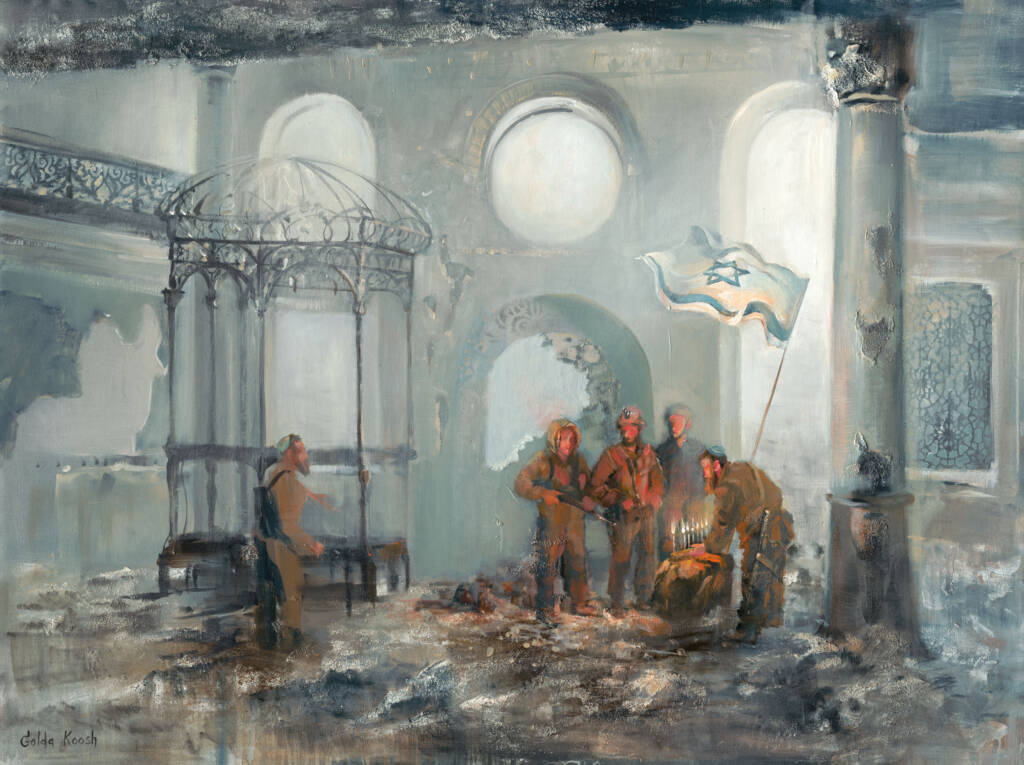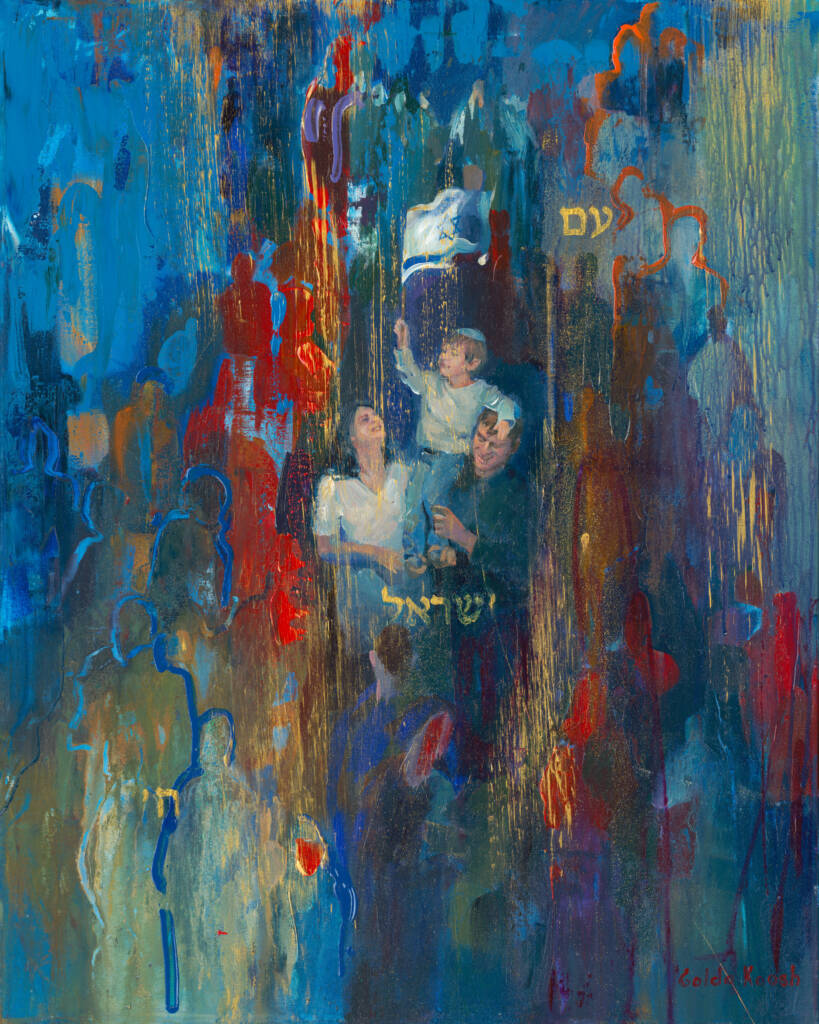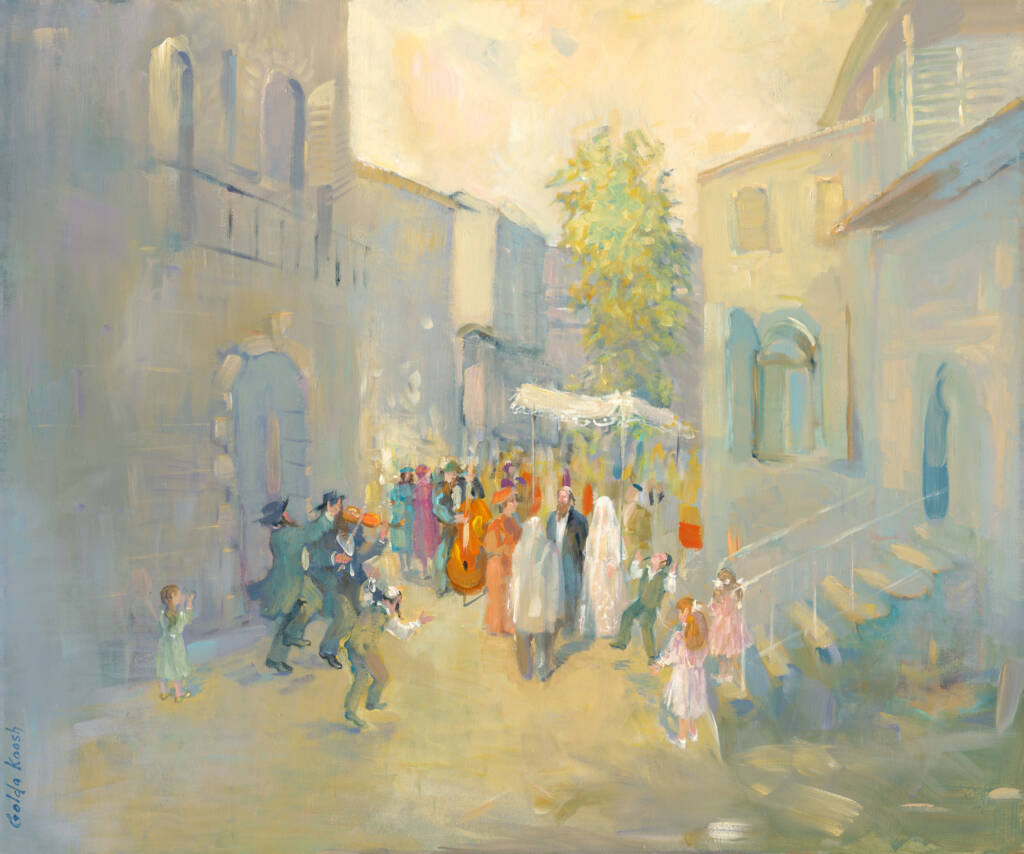In every canvas I paint, there is a story waiting to be uncovered. But it’s not always told in words. More often, it’s expressed through symbols, gentle, familiar, and layered with meaning. This is the essence of Judaica art. It speaks a visual language, quiet but powerful, that carries our values, history, and faith. Over the years, I’ve come to see my work as part of a greater tradition: uncovering the hidden languages of Judaica art and helping them speak to the hearts of today’s collectors and admirers.
Nature and Nation: The Calanit and the Almond Tree
Sometimes, the simplest symbols carry the deepest meaning. The calanit, Israel’s beloved red anemone, is one such example. It blooms across the land in early spring, bright and bold against the green fields. For me, the calanit represents resilience. It reminds us of beauty rising after harsh winters. I often include it in my paintings as a symbol of renewal, hope, and the unbreakable bond between land and people.
Similarly, the almond tree has become one of my favorite visual metaphors. It is the first tree to blossom in Israel, often blooming in late winter when the world still feels gray and still. Its blossoms are delicate but determined, signaling that a new season is near. In the hidden languages of Judaica art, the almond tree speaks of faith. Moreover, it tells the story of believing in growth even before the warmth arrives. When I paint this tree, I am painting a promise.
Sacred Light: The Hanukiah
Light plays a central role in Jewish tradition, and nowhere is this more apparent than in the Hanukiah. It is not just a candelabrum. It is a symbol of endurance, victory, and divine presence. When I paint a Hanukiah, I focus on the glow, which is soft, sacred, and unwavering. This light does more than illuminate; it protects, it blesses, and it tells a story of miracles.
One of my paintings features a lone unit in the ruins of war praying around the Hanukiah. Outside, the world is dark, but the flames burn steadily, warm and defiant. This image captures something I believe deeply: in Jewish life, light is never just physical. It is spiritual. It is the light of identity, of memory, of the soul. In the hidden languages of Judaica art, these flames whisper our collective strength.
The Israeli Flag: A Modern Symbol, Rich in Meaning
Not all Judaica symbols are ancient. Some, like the Israeli flag, are newer, but no less sacred. The blue and white stripes, inspired by the tallit, and the central Star of David, carry profound meaning. They represent continuity and connection. They speak to the survival and rebirth of a people who never lost their way home.
The flag brings a sense of rootedness, a reminder that even today, the Jewish story continues to unfold. For collectors who seek art that bridges tradition with the present, these works are especially meaningful.
Under the Chuppah: A Covenant of Love and Community
Among the most cherished Jewish symbols is the chuppah. It appears in several of my paintings, not always as a literal structure, but as a frame of belonging. The chuppah is more than a wedding canopy, it is a symbol of unity, trust, and divine shelter.
In one piece, I painted a bride and groom beneath a flowing chuppah, surrounded by figures representing community, ancestors, and future generations. The message is clear: a Jewish marriage is not only about two people, it is a sacred bond held within the larger story of our people. This image, like many others in my work, draws from the hidden languages of Judaica art, reminding us that every ritual carries the weight of memory and hope.
The Art of Recognition
When collectors visit my studio or view my work online, they often find themselves moved by something they can’t quite name. It might be the gentle curve of a tree, the quiet flicker of a candle, or the outline of a city they’ve never visited but always felt connected to. That’s the beauty of the hidden languages of Judaica art, they don’t shout. They resonate. They meet us where we are and speak directly to the soul.
As an artist, I see myself as a guardian of these symbols. I don’t invent them; I reveal them. I give them color and form, letting them live on walls and in homes, carrying their messages quietly but clearly.
Why Jewish Symbols Still Matter
In our fast-paced, digital world, visual symbols offer something grounding. They slow us down. They ask us to look again. And in that second glance, we often find a connection we didn’t expect.
The hidden languages of Judaica art offer more than aesthetic value. They are vessels of meaning, timeless, elegant, and deeply personal. They turn living rooms into sanctuaries. As well, they turn collectors into keepers of tradition. And they turn art into a legacy.
A Personal Invitation to the Hidden Languages of Judaica Art
Whether you are new to Judaica art or have been collecting for years, I invite you to explore this symbolic world with fresh eyes. Look for the almond trees. Notice the light of the hanukiah. Let the calanit bloom for you too.
These symbols are not hidden to keep secrets. They are hidden like treasures, waiting to be discovered, cherished, and shared.










